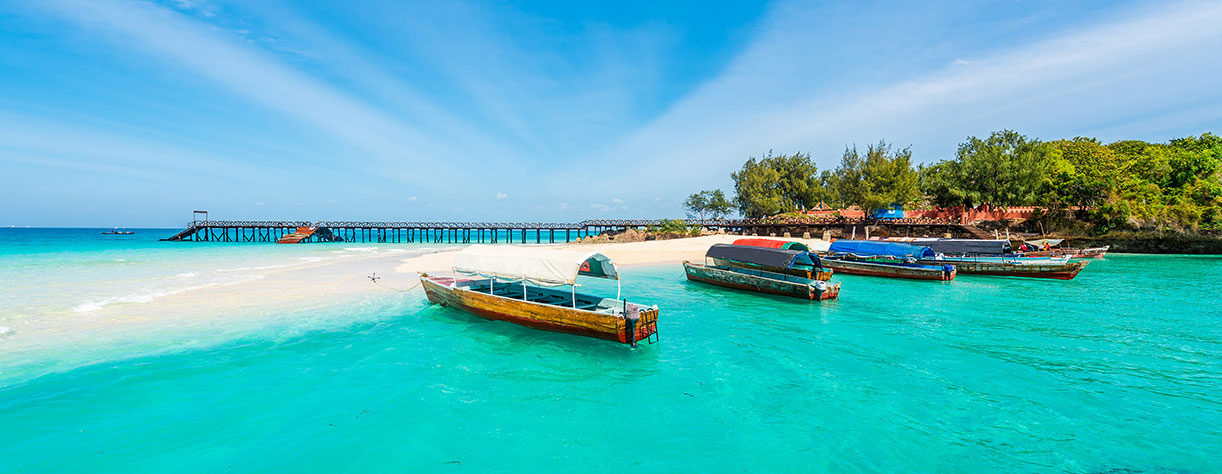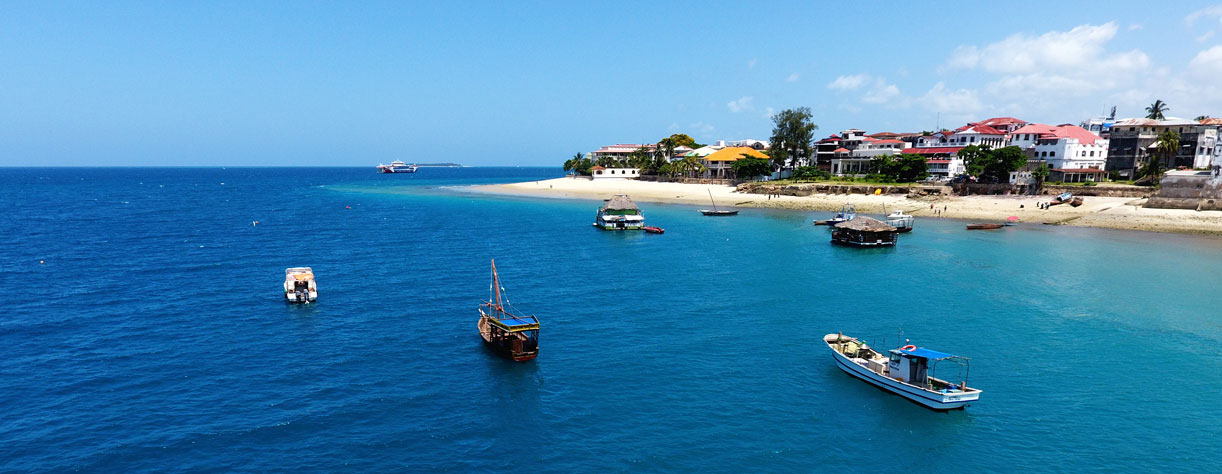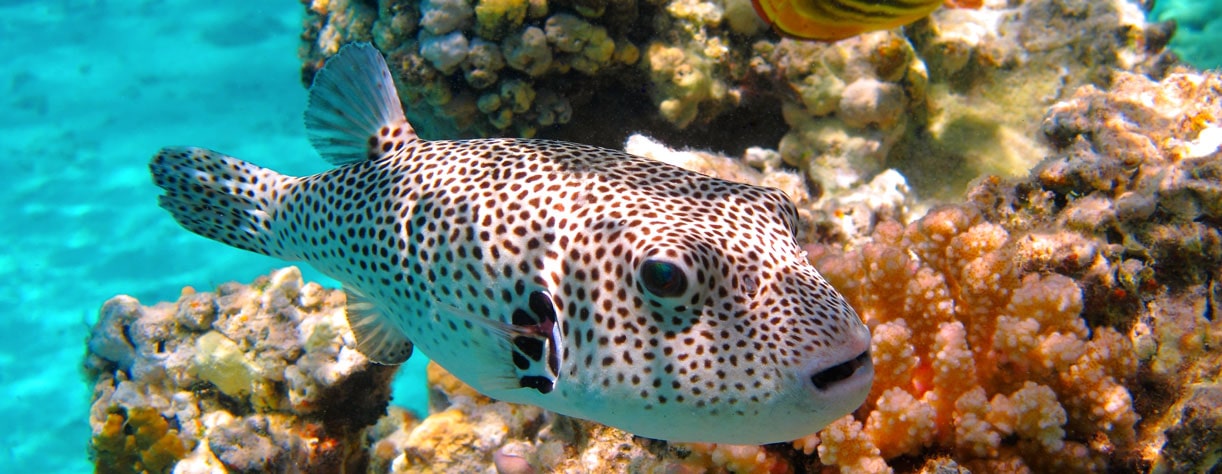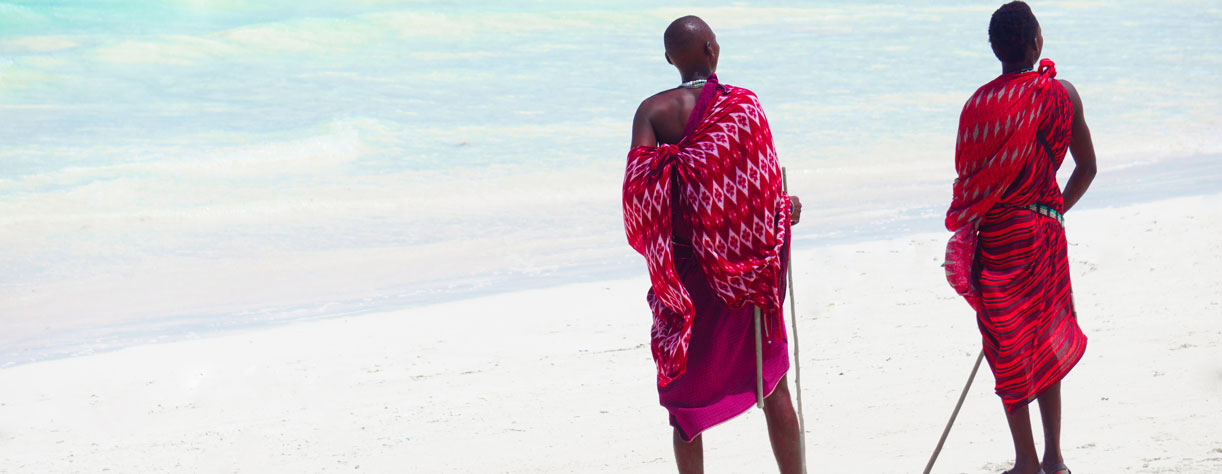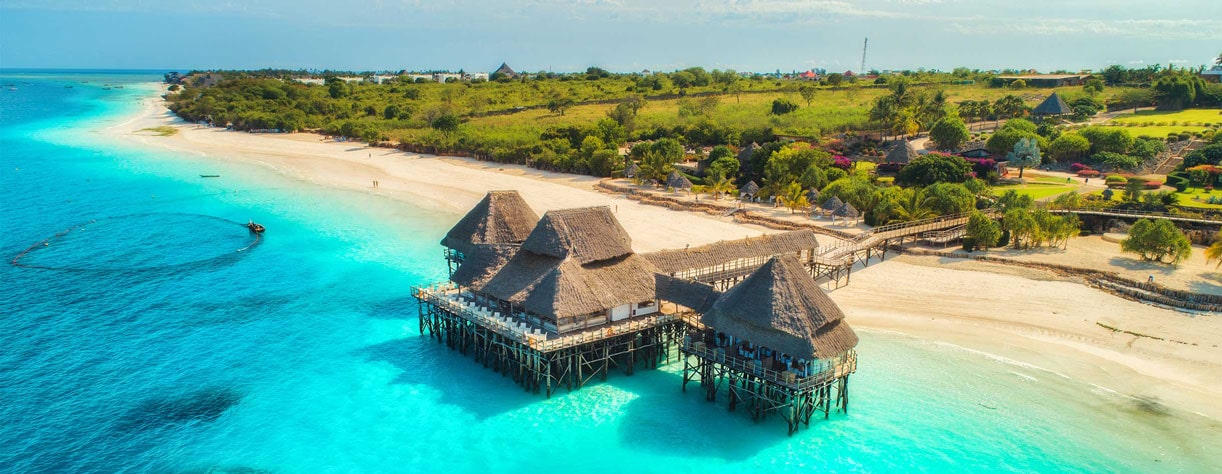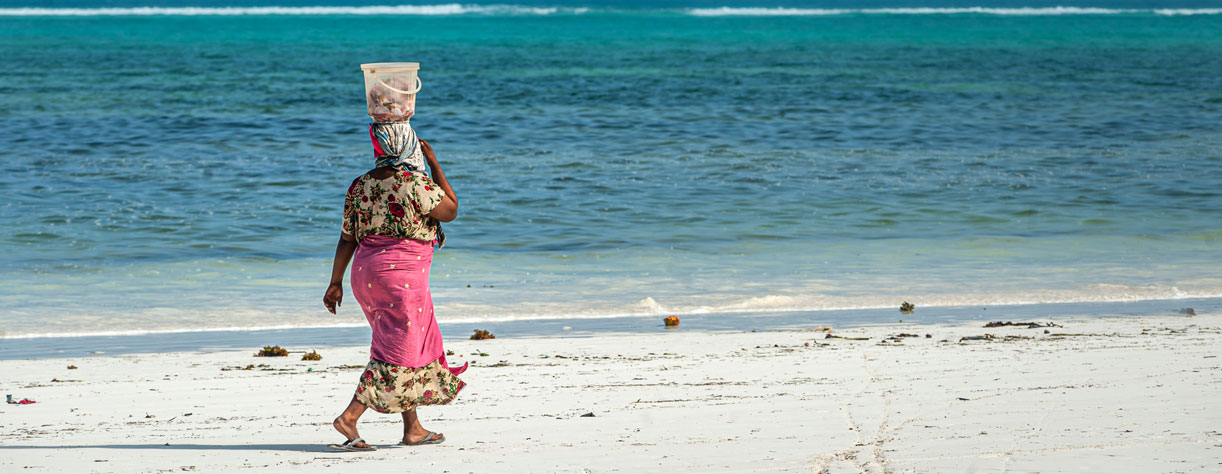Beautiful beaches, unique culture and a deep, interesting history. There are many reasons why you might choose to visit Zanzibar. Whether this island is on the itinerary for your next cruise holiday or you’re wondering about booking a break here. This travel guide will give you all the details you need to know before you go.
Where is Zanzibar?
Zanzibar is an archipelago situated in the Indian Ocean. It sits 22 miles off the east coast of Tanzania and includes two larger and several smaller islands. The main islet is commonly referred to as Zanzibar, with the second largest called Pemba Island.
What is Zanzibar famous for?
Travellers to Zanzibar go for the paradise beaches, clear azure waters and tropical marine life. There are many indigenous species, including leopards, mongooses and monkeys. Meaning the remaining forests are as rich with life as the waters surrounding the island.
Alongside its unique environments and wildlife, Zanzibar also has a deep history. Famous as a key stop on the Indian Ocean spice trade route, it attracted immigrants from Africa, Arabia and Portugal. Their descendants make up some of today’s Zanzibarian population of more than 700,000 people.
This rich history has also contributed to the island’s unique culture and architecture. The capital, Zanzibar City and Stone Town are two standout examples. Combining the archipelago’s ancient beauty with relaxed, seaside living.
What is Zanzibar called now?
The main island is commonly known as Zanzibar Island but is locally called Unguja. Pemba Island is the name of the second-largest islet.
When to go to Zanzibar?
The weather in Zanzibar is typically dry in warm outside of the wet season. Humid and with temperatures typically reaching up to 35C, avoiding the rainy season will give you the best island experience.
Getting ready for a visit to Zanzibar
An exciting and unique place to visit, there are a few practical considerations to visiting Zanzibar.
Is Zanzibar safe?
Zanzibar is safe for travellers to visit. As tourism is one of the biggest parts of the local economy, local people welcome foreign visitors to the island. As with any destination, sensible precautions include taking care of your valuables and remaining in a group after dark.
What language is spoken in Zanzibar?
The primary and official language spoken in Zanzibar is Swahili. However, many locals also speak Arabic and English. Some hospitality workers will speak Italian or French.
What currency does Zanzibar use?
The official currency of Zanzibar is the Tanzanian Shilling. Some tourist areas also accept US dollars.
What to do in Zanzibar?
Whether you’re a foodie, an outdoor adventurer or a culture-lover, there are plenty of activities to enjoy in Zanzibar.
Explore the island’s history
From elaborate Indian-inspired doors and balconies to the simpler style of Swahili houses. You’ll get a sense of Zanzibar’s history as soon as you arrive. A UNESCO World Heritage site, Stone Town is a fascinating testament to this heritage.
The weathered Sultan’s Palaces and Arabian merchant mansions are a nod to the town’s prosperous spice trading heritage. In the 19th-century Palace Museum, you can see original furniture, artwork and historical artefacts.
The Old Dispensary is another ocean-front example of Zanzibar’s colonial architecture. The island’s role in the slave trade is also apparent with a commemorative sculpture and Anglican Cathedral lying on the site of the former slave market.
Experience Zanzibari life
Zanzibari life is less hakuna matata (which only tourists use) and more pole pole, the Swahili phrase for slow. While you’re visiting, it’s important to take life steadier. Getting on Zanzibarian time is a worthwhile challenge. The island’s close proximity to the equator means locals measure time by counting the hours from sunrise, so 7am Western Time is equivalent to 1am on the island.
Though island life is more relaxed, the Darajani Market will immerse you in the hustle and bustle of every day life. As the biggest market on the main island, locals gather here to sell produce, from spices and fruit to meat and fish. You’ll be sure to taste delicious food and get several greetings – but don’t expect a response to any bargaining.
Taste the spices
From cloves to coconuts, an incredible array of produce grows on this fertile island. With the nickname Spice Island, botanicals and plants are still a huge part of the Zanzibar’s life and cuisine. One of the best ways to learn more about this fascination is to visit a plantation, where you’ll find out about the island’s spice cultivation and its use in food and medicine.
Zanzibarian cuisine has influences from Asia, Africa and Arabia. This means you can taste spices in a way you never have before. In the evening, head to Forodhani Gardens. Here, stalls sell sugarcane juice, seafood and Zanzibar Pizza (stuffed chapati-style dough).
Enjoy the sunshine
Prison Island doesn’t sound much like paradise. Yet a short boat ride from Stone Town will leave you surrounded by beautiful soft sands, clear waters and coral reefs. Venture a little further afield and you’ll find some of the best beaches on the east coast at Pongwe.
Go wildlife spotting
Take a trip to Jozani Forest in the island’s interior, home to the rare Red Colobus Monkey, bush babies and a variety of bird and butterfly species. Immerse yourself in these indigenous forests with a tour. A local guide will be able to highlight the variety of flora and fauna, including mangrove trees.
The wildlife on land is just one part of Zanzibar’s unique environment – to see the rest, you need to take to the water.


